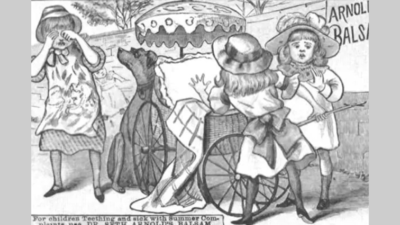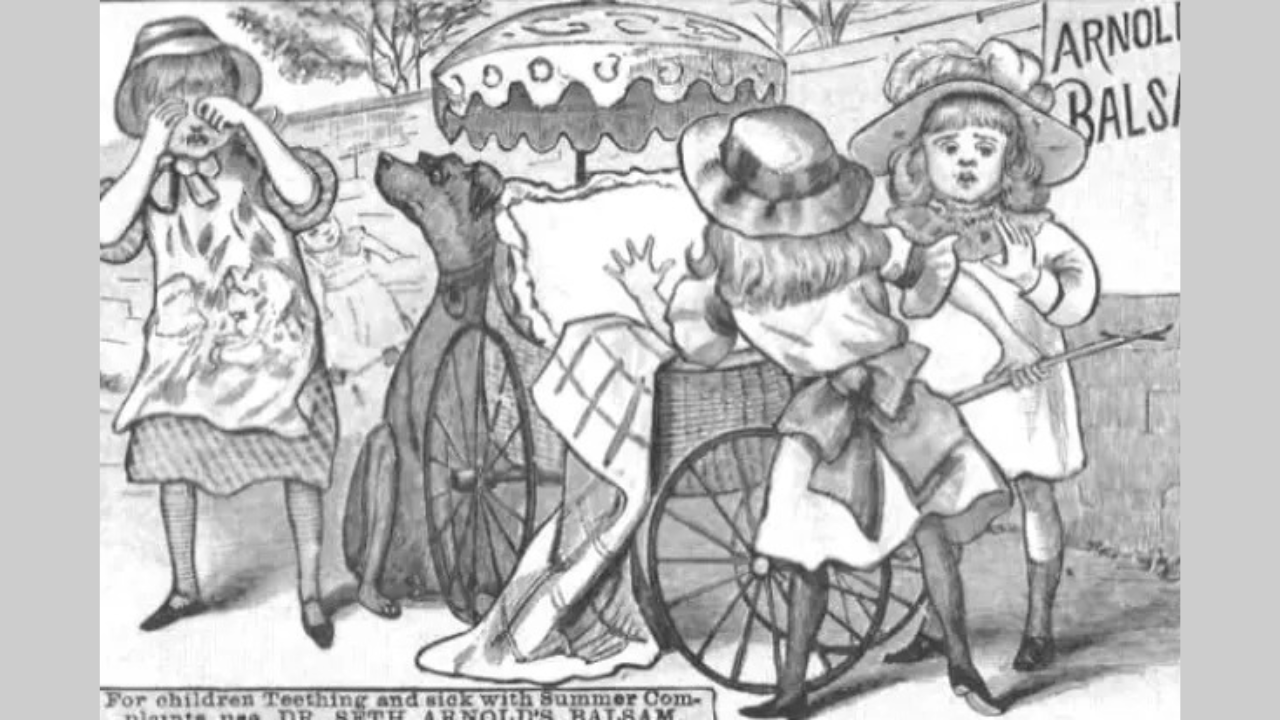This black-and-white illustration features several children, a baby carriage, a dog, and a parasol. Artists often use clever visual tricks to embed hidden elements in such drawings, blending them into the surroundings.
These artistic illusions are created using the principles of
pareidolia
, where the brain interprets random patterns as familiar objects—in this case, human faces. Such creative techniques were often used in vintage advertisements and illustrations to add intrigue and captivate viewers. This particular illustration combines the whimsical innocence of childhood with clever
visual puzzles
, making it engaging for viewers of all ages.
Look closely on the draped cloth
Another baby’s face is hidden in the folds of the cloth draped over the baby carriage. If you observe carefully, the light and shadow on the cloth form a profile view of a baby’s face, complete with a visible forehead, nose, and lips. The placement and contours make it appear as though the fabric naturally falls in this pattern, but the design intentionally mimics a baby’s profile.
Look behind the crying woman
Look closely behind the crying woman. The design on the wall is not just decorative—it contains the outline of a baby’s face. The face is visible in the patterns, with its eyes, nose, and mouth subtly integrated into the texture of the parasol. The baby’s face is oriented towards the viewer, cleverly camouflaged.
Why you must challenge yourself with difficult optical illusions?
Solving complex optical illusions improves
cognitive skills
such as concentration, critical thinking, and pattern recognition. Analyzing intricate visual images forces the brain to have a different look at the information in different perspectives, thus boosting problem-solving skills with visual-spatial reasoning.
Difficult optical illusions require careful attention and concentration. In a quest for something invisible or even the resolution of some visual contradiction, your brain learns to hold focus for longer periods, thereby improving your skills and abilities to focus on other daily tasks that require precision and mental discipline.
Optical illusions challenge one’s view of reality while forcing someone to think beyond the obvious, which causes a person’s mind to stir creative thinking, for the better, since it learns to approach and solve visual puzzles through unconventional means. It fosters open-mindedness and adaptability.
Attempting optical illusions could be a soothing yet stimulating activity. Upon solving them, they evoke a feeling of accomplishment, and they distract the brain from stressors, thus entertaining while healing the mind.
Regularly solving such puzzles enhances neuroplasticity. This will keep one’s brain agile with reduced risks of cognitive decline as well as lifelong learning and mental sharpness.
I’m Manas Ranjan Sahoo: Founder of “Webtirety Software”. I’m a Full-time Software Professional and an aspiring entrepreneur, dedicated to growing this platform as large as possible. I love to Write Blogs on Software, Mobile applications, Web Technology, eCommerce, SEO, and about My experience with Life.




